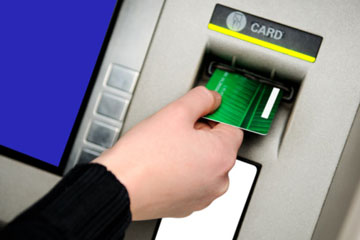
With more than 1.5 million Automated Teller Machines around the world, most of us simply take our ATM cards (debit and credit cards) for granted. Unfortunately, thieves know this and use it to their advantage; so ATM card theft is a big problem.
In fact, as the ATM banking technology advances so too do the thieves. They have become so clever in their crimes that you may well not see them coming. The good news is that there are easy ways to protect yourself from ATM theft.
ScamBuster highlight five common ATM scams and how to avoid them. Since knowledge is power, ScamBuster also offer eight tips on recognising and avoiding these scams.
Common question about ATM
This is one of the most common questions about ATM machines: Does entering your PIN in reverse really summon the police?
The answer is no. This is a common mistake. Although this concept seems like a good idea, and a system was actually designed to notify the police by a Chicago businessman (so there is a grain of truth to this urban legend), but no such system has been implemented.
The banking industry is not interested in the technology because of the cost and because they don’t believe it will work. Imagine trying to remember you PIN backwards with a thief pointing a gun at your head.
So, simply delete these email hoaxes and don’t spread them to your friends.
According to www.allclearid.com, here are five common ATM theft scams you need to avoid
- The Lebanese Loop
Many thieves are using external devices to confiscate your card. In this scam, a blocking device (which can be as simple as some film glued to trap the ATM cards), is inserted into the card slot of the ATM machine. Unwittingly, you place your card into the machine and enter your PIN. All the while, someone nearby may be watching you enter your PIN.
A very common reaction is to go into the bank to report your confiscated card. Now, the thieves jump into action. They remove the blocking device, along with your trapped ATM card and withdraw money from your account.
The way the scammers use the Lebanese Loop can vary. Often, once your ATM card is trapped, a “Good Samaritan” will show up and offer advice on how to get your card back. They may suggest that you enter your PIN number a couple of times.
They may also offer to hold the cancel button while you enter your PIN. What they’re really doing is memorising your PIN. They’re certainly not Samaritans at all!
- Card skimming
Skimmers are devices added to ATM machines to capture your card’s information, including your account number, balance and PIN. These devices, often mounted alongside a machine and labelled ‘card cleaners,’ are difficult to notice unless you’re looking for them.
You may also find card skimmers mounted beside the normal ATM card slot with a sign that says, “Slide card here first.” Sometimes they are even mounted right on top of where you would normally enter your card. Skimmers can actually collect and store up to 200 ATM cards before they need to be removed by thieves.
- Shoulder surfing, fake PIN pads, and even fake machines
Another way to glean your ATM PIN is for thieves to mount a wireless video camera inside the ATM area. It can look as harmless as a brochure holder. Once the scammers have your number, magnetic strips are easy to make and thieves are able to easily reproduce ATM cards.
In addition to using cameras to collect PINs, thieves have designed fake PIN pads that they place on top of the original ATM PIN pad.
Unfortunately, with fake PIN pads, your ATM transaction will proceed normally and you won’t know a scammer has stolen anything until it’s too late.
Thieves have also taken to occasionally putting up fake ATM machines in and around shopping centres and other public locations. Upon placing your card into the card reader, these machines collect your ATM PIN and account information. They do not dispense cash. Rather, a screen comes up that says that the machine is out of money or out of order.
- Cash trapping
Similar to the Lebanese Loop where a thin sleeve traps your card, this time your cash is trapped by a sleeve or device slipped inside the cash dispenser. Your transaction will operate normally, but you won’t receive the cash you’ve withdrawn.
Chances are you’ll either walk or drive away assuming the machine is out of order or you’ll go inside the bank and report the incident. Either way, you have left the machine and the thieves can walk up, remove the device, and your cash.
- Phishing
We mentioned above how easy it is for thieves to replicate ATM cards. All they need is a magnetic strip and a plastic card. Armed with an ATM card, all a would-be thief needs is a PIN. Some email phishing scams have been designed to find out just that.
Representing your bank, a scammer can send you an email with a notice on it saying something about incomplete account information or that you need to update your account information. You click on the link and follow the directions but you’re not at your bank, you’re at a site designed to look like your bank by thieves. They collect your information and are free to replicate your ATM card or simply withdraw money from your account via online banking.

 Trending Posts
Trending Posts



